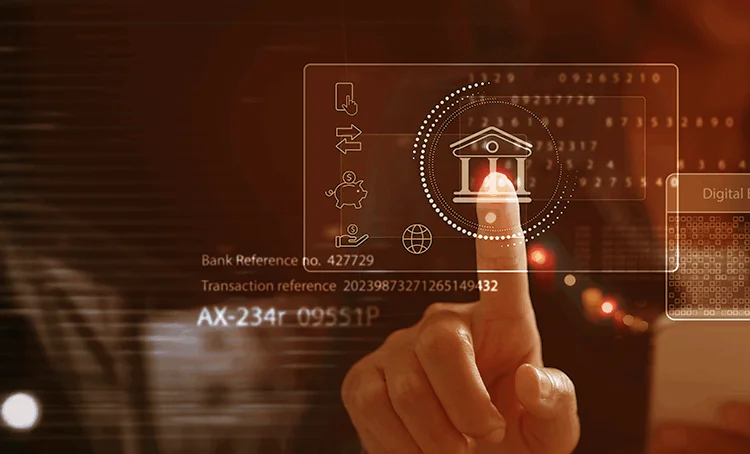The problem of banking fraud has grown significantly in recent years. To get around conventional detection systems, skilled criminals now employ automation, fictitious identities, and AI-driven strategies. Global card fraud losses are expected to surpass $40 billion by 2027, according to the Nilson Report, and this amount only scratches the surface of the problem. Complexity is increased by account takeovers, insider fraud, money laundering, and fake KYC (Know Your Customer) attacks.
Conventional fraud detection systems rely on fixed rule engines and sporadic model retraining. Although these techniques are effective for well-known patterns, they frequently have trouble reacting quickly to novel attack techniques. Autonomous analytics pipelines and Gen AI solutions offer a significant change in this regard: detection systems that can scale without requiring human input, learn on their own, and comprehend context.
The Shift from Reactive to Autonomous Fraud Analytics
Before diving into architecture, it’s worth framing what “autonomous” actually means in this context.
- Reactive systems are the systems that detect problems after they happen, usually relying on a limited number of past fraud cases.
- Proactive systems on the other hand can spot threats by identifying unusual trends much earlier but still need analysts to change thresholds or retrain models.
- Autonomous systems are the systems that continuously monitor, learn, adapt, and act without explicit commands, while still allowing human oversight for governance and compliance.
Gen AI is essential for achieving this autonomy. Rather than just following pre-set algorithms, it creates new detection methods, generates synthetic data for rare fraud cases, and adapts model setups in real time.
Core Components of an Autonomous Analytics Pipeline for Fraud Detection
Building such a pipeline isn’t just about plugging in an LLM or auto-ML framework. It requires an end-to-end design that combines streaming data processing, adaptive AI models, and decision automation.
1. Data Ingestion Layer
Fraud detection thrives on data variety and velocity. The ingestion layer must handle:
- Transactional data: Card swipes, ATM withdrawals, and online payments all come under the category of transactional data.
- Behavioral data includes device fingerprinting, geolocation, and navigation patterns.
- Third-party feeds include blacklists, consortium fraud databases, and regulatory alerts.
- Unstructured data: Customer support chats, suspicious email attachments, and scanned documents all come under the category of unstructured data
A Gen AI-enabled ingestion system can:
- Auto-classify unstructured data using LLM-based semantic parsing.
- Apply real-time schema evolution to accommodate new fields from data partners without breaking downstream pipelines.
Example: If a regulator introduces a new AML reporting field tomorrow, the ingestion system adapts automatically, rather than requiring days of manual schema updates.
2. Feature Engineering and Enrichment
Feature engineering is where detection accuracy is often won or lost. Traditional systems rely on manually crafted features, e.g., transaction velocity, merchant category frequency – updated quarterly or annually.
With Gen AI:
- Dynamic Feature Generation: LLMs can propose new risk indicators by correlating disparate data sources (e.g., combining travel booking metadata with card usage to detect “location impossible” anomalies).
- Entity Resolution: Automatically link related entities (accounts, IP addresses, devices) to uncover fraud rings.
- Synthetic Feature Testing: Generate simulated data to stress-test features against hypothetical attack scenarios.
3. Adaptive Model Layer
A hallmark of autonomous analytics is self-evolving models. Instead of fixed training cycles:
- Gen AI-assisted AutoML continuously searches for better model architectures (XGBoost, Graph Neural Networks, Transformer hybrids) based on current fraud patterns.
- Models are retrained in incremental learning mode, digesting small batches of new labeled data in real time, and reducing the gap between detection and adaptation.
- Explainability by Design: Gen AI generates human-readable rationales for why a transaction was flagged, improving analyst trust and aiding regulatory audits.
Case in Point: Graph neural networks can detect fraud rings by analyzing transaction networks. Gen AI can augment this by generating interpretable summaries like:
“Account A is likely compromised due to high-velocity peer transfers to accounts linked with prior fraud cases in the same subnet.”
4. Decision and Action Layer
This is where autonomous behavior becomes tangible:
- Policy-Driven Auto-Blocking: If a transaction score exceeds a Gen AI-defined confidence threshold, it’s auto-blocked and queued for analyst review.
- Gen AI-Generated Alerts: Alerts are summarized in plain language, with contextual evidence attached.
- Adaptive Thresholding: The pipeline can adjust fraud scoring thresholds in real time during emerging attack waves by lowering tolerance during a coordinated phishing surge and much more.
5. Feedback and Continuous Learning
An autonomous pipeline is incomplete without a closed feedback loop:
- Analyst feedback on false positives/negatives is ingested in near real time.
- Gen AI synthesizes these corrections into updated rules and model weights.
- The system proactively notifies analysts about new anomaly classes emerging in the wild.
The Role of Gen AI in Making Fraud Analytics Truly Autonomous

While ML has been central to fraud detection for years, Gen AI adds capabilities that close critical gaps.
1. Generating Synthetic Fraud Scenarios
Many fraud types are rare or evolve faster than labeled datasets can capture. Gen AI can simulate realistic fraudulent transaction patterns, creating synthetic “red team” data for model training.
Example: Generating a dataset of synthetic mule accounts coordinating cross-border micro-transactions over varying time zones, to train detection models before such schemes appear in real customer data.
2. Autonomous Feature Hypothesis Generation
Human analysts might overlook subtle features (e.g., transaction description linguistic quirks). Gen AI can propose such hypotheses by scanning historical data and generating potential features that improve detection sensitivity.
3. Natural Language Data Parsing
Banking fraud investigations often involve unstructured case notes, emails, and regulatory reports. LLMs can parse these documents, extract entities, and link them to structured transaction data, bringing previously siloed intelligence into the pipeline.
4. Automated Incident Narratives for Compliance
Regulators require detailed incident reporting. Gen AI can auto-generate structured SAR (Suspicious Activity Report) narratives with transaction IDs, timelines, and risk reasoning cutting manual reporting time from hours to minutes.
Architectural Blueprint
Here’s a simplified reference architecture for such a pipeline:
- Streaming Data Sources → Kafka / AWS Kinesis
- Data Parsing & Classification → Gen AI-powered NLP services
- Feature Store → Redis / Feast with Gen AI-generated features
- Model Serving → Real-time scoring via TensorFlow Serving / PyTorch Serve
- Decision Engine → Policy layer with Gen AI-based thresholding
- Feedback Loop → Analyst UI → Model retraining trigger
- Audit Layer → Gen AI-generated incident narratives stored in compliance vaults
Challenges and How to Overcome Them
While promising, autonomous Gen AI fraud pipelines face many practical hurdles. Some of which are included below:
1. Data Privacy & Compliance
- Risk: Training LLMs on sensitive PII.
- Mitigation: Use federated learning and anonymized embeddings to protect customer data.
2. False Positives and Customer Experience
- Risk: Aggressive blocking can alienate legitimate customers.
- Mitigation: Gen AI can rank alerts by confidence and route borderline cases to human review.
3. Model Drift & Adversarial Attacks
- Risk: Fraudsters may adapt to the detection logic.
- Mitigation: Continuous model evolution and adversarial training using synthetic fraud scenarios.
4. Explainability for Regulators
- Risk: Black-box AI decisions may be rejected.
- Mitigation: Embed explainable AI (XAI) layers that generate regulator-friendly narratives.
Real-World Impact: From Manual Review to Self-Healing Pipelines
In a traditional fraud operations center, an analyst might spend 10–15 minutes reviewing a single flagged transaction. If you multiply that by thousands of daily alerts, you get an operational bottleneck.
But with an autonomous Gen AI pipeline:
- Alert triage is largely automated.
- False positive rates drop through adaptive thresholding.
- New fraud patterns are detected days or weeks earlier.
- Compliance reporting becomes an automated byproduct rather than a separate workflow.
A Tier-1 European bank using a hybrid Gen AI + graph analytics pipeline reported a 22% improvement in detection rates and 40% reduction in false positives within six months, while maintaining regulatory compliance.
Best Practices for Implementation
To reduce risk and increase ROI:
- Begin with a Pilot Use Case: Prior to growing, concentrate on a particular kind of fraud, such as account takeover.
- Use a Human-in-the-Loop Model: progressively increase levels of autonomy while keeping supervision.
- Connect with Case Management Systems: Make sure that workflows for fraud investigations receive Gen AI alerts directly.
- Put Data Quality First: Automated data profiling and cleansing should be used at the ingestion stage.
- Measure What Matters: Monitor key performance indicators (KPIs) like analyst workload reduction, false positive rate, and detection latency.
Conclusion: A New Era for Fraud Analytics
Banking fraud is a dynamic target since new strategies are developed by attackers with each new detection. Static systems are unable to keep up. Gen AI-powered autonomous analytics pipelines are the next big thing: real-time learning, adapting, and acting systems that don’t compromise explainability or compliance.
This is a competitive advantage for banks, not just a technological advancement. In a time when security is a crucial differentiator, those who can identify and stop fraud early not only minimize losses but also increase customer trust.
Fraud detection pipelines will probably develop into self-healing, cross-institution intelligence networks as adoption increases. Gen AI will allow banks to exchange anonymized threat insights almost instantly. The cost of fraud may eventually begin to decrease in that future, not because criminals have given up, but rather because defenses have improved in intelligence, speed, and autonomy.
About Indium
Indium is an AI-driven digital engineering company that helps enterprises build, scale, and innovate with cutting-edge technology. We specialize in custom solutions, ensuring every engagement is tailored to business needs with a relentless customer-first approach. Our expertise spans Generative AI, Product Engineering, Intelligent Automation, Data & AI, Quality Engineering, and Gaming, delivering high-impact solutions that drive real business impact.
With 5,000+ associates globally, we partner with Fortune 500, Global 2000, and leading technology firms across Financial Services, Healthcare, Manufacturing, Retail, and Technology, driving impact in North America, India, the UK, Singapore, Australia, and Japan to keep businesses ahead in an AI-first world.














Discussion about this post